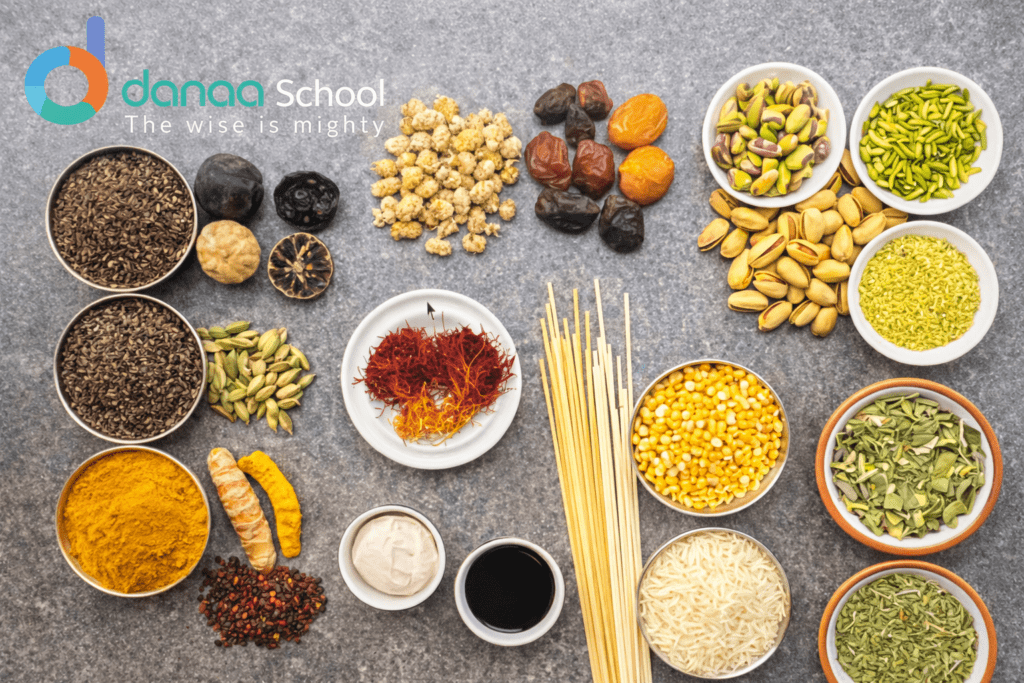Chaharshanbe Suri, an electrifying celebration deeply ingrained in Iran’s cultural tapestry, transcends mere festivity, embodying centuries-old traditions, rich symbolism, and communal unity. The festival serves as a spirited prelude to Nowruz, the Persian New Year, with its origins in ancient Zoroastrian rites.
As anticipation mounts in 2024, marking the eve of the last Wednesday before the Persian calendar resets, Iranians across the globe prepare to partake in this joyous occasion, eagerly anticipating the exhilarating festivities that lie ahead.
Chaharshanbe Suri Traditions
The traditions surrounding Chaharshanbe Suri are as diverse as they are captivating, weaving a vibrant tapestry of customs and rituals that speak to Iran’s soul. From the rhythmic pounding of spoons on pots to the exhilarating leaps over crackling bonfires, each tradition carries profound symbolism, embodying renewal, purification, and communal solidarity themes. Passed down through generations, these cherished customs serve as a testament to the enduring resilience of Iranian culture.
Historical Roots of Chaharshanbe Suri
To comprehend the essence of Chaharshanbe Suri is to journey through time, tracing its origins to the ancient Zoroastrian practices that once flourished in Persia. In those bygone eras, Nowruz fire held sacred significance as a symbol of purity and divine illumination, and Chaharshanbe Suri emerged as a ritualistic homage to these beliefs. Over the centuries, the festival evolved, intertwining pre-Islamic and Islamic cultural elements yet retaining its reverence for fire and light.
Significance of Chaharshanbe Suri in Nowruz
Chaharshanbe Suri is a triumphant herald of Nowruz, heralding the arrival of spring and the promise of new beginnings. Its significance extends beyond mere revelry, symbolizing the triumph of light over darkness, hope over despair. As Iranians gather around bonfires to leap into the new year, they cast away the shadows of the past, embracing the dawn of a brighter future with unbridled optimism and joyous anticipation.
Preparations for Chaharshanbe Suri
In the days leading up to Chaharshanbe Suri, a palpable sense of excitement permeates the air as Iranians meticulously prepare for the festivities. Streets bustle with activity as vendors peddle traditional treats and trinkets while families gather firewood and adorn their homes with vibrant decorations. Children eagerly await the opportunity to partake in the age-old rituals, their faces alight with anticipation for the joyous celebrations.
Cultural and Spiritual Symbolism
At its core, Chaharshanbe Suri is imbued with profound cultural and spiritual symbolism, poignantly reflecting Iranian identity and values. Nowruz fire Jumping represents a symbolic purification of the soul, casting away negativity and impurities to embrace the blessings of the new year with renewed vigor. Similarly, the rhythmic clang of spoons against pots serves as a collective invocation for prosperity and good fortune, uniting communities in a shared aspiration for a brighter future.
Jumping over the fire
Undoubtedly the most iconic of Chaharshanbe Suri’s rituals, leaping over bonfires is steeped in ancient tradition and symbolism. As flames crackle and dance in the night sky, young and old participants gather around, encouraged by the belief that passing through the fire will cleanse them of past transgressions and usher in blessings for the year ahead. It is a moment of profound significance, marking the transition from darkness to light, from despair to hope.
Spoon-Banging in Chaharshanbe Suri
Another beloved tradition involves children roaming the streets with spoons, their rhythmic pounding on pots and pans echoing through the neighborhood. This joyful cacophony serves not only to drive away evil spirits but also to unite the community in a shared sense of purpose and celebration. Through this simple yet powerful act, Iranians reaffirm their collective resilience and determination to face whatever challenges the future may hold.
Smashing The Pot (kūza-šekanī)
In certain regions of Iran, participants engage in the age-old tradition of smashing pots, symbolizing the shattering of obstacles and barriers to their aspirations. As clay shards scatter, so do the burdens of the past, making way for a future filled with promise and possibility. It is a symbolic gesture of renewal, reaffirming the belief in the power of perseverance and resilience to overcome adversity.
Fortune Telling (fāl) in Chaharshanbe Suri
Fortune-telling is a cherished aspect of Chaharshanbe Suri, with individuals seeking insights into their future fortunes through various divination methods. From interpreting the patterns of flames to reading tea leaves, these age-old rituals offer a glimpse into what the coming year may hold, providing reassurance and guidance in uncertain times. It is a moment of introspection and reflection as Iranians look to the cosmos for answers and inspiration.
Burning Rue (Esfand)
Burning rue, a fragrant herb revered for its purifying properties, is common during Chaharshanbe Suri. As its aromatic smoke fills the air, it is believed to ward off evil spirits and bring blessings to those who partake in the ritual. It serves as a symbolic cleansing of both body and soul, preparing individuals for the spiritual renewal that accompanies the arrival of the new year.
Dropping the Showl (šāl-andāzī)
In some regions, participants engage in the tradition of “dropping the showl,” tossing a scarf or cloth over their heads, and making a wish. As the fabric settles, so do their hopes and aspirations for the coming year, carried on the gentle breeze of the night sky. It is a moment of quiet contemplation and hopeful anticipation as Iranians dare to dream of a future filled with happiness and prosperity.
A Wish-Granting Snack (Ajeel e Chaharshanbe Suri)
Ajeel, a delectable snack made from a medley of nuts, seeds, and dried fruits, holds a special place in Chaharshanbe Suri celebrations. Believed to possess wish-granting powers, it is consumed with gusto as Iranians partake in the age-old tradition of making wishes for the year ahead. With each mouthful, they imbibe a sense of hope and optimism, confident that their deepest desires will soon come to fruition.
Chaharshanbe Suri During Qajar Era
During the illustrious Qajar era, Chaharshanbe Suri reached its zenith, with lavish celebrations attended by royalty and commoners alike. The festival served as a unifying force, transcending social divides and fostering a sense of national pride and solidarity. From the opulent palaces of Tehran to the humble villages of the countryside, Iranians from all walks of life came together to revel in the joyous festivities, their spirits buoyed by the promise of a brighter tomorrow.
Other than Iran, in what countries is Nowruz celebrated?
While Nowruz is most prominently celebrated in Iran, its cultural significance extends far beyond the borders of the country. Across the globe, in countries with significant Persian populations, such as Afghanistan, Azerbaijan, Tajikistan, and Central Asia, Nowruz is embraced as a time-honored tradition that brings communities together in celebration of renewal and rebirth. From festive gatherings to elaborate feasts, the spirit of Nowruz transcends cultural and geographical boundaries, uniting people in a shared celebration of hope and prosperity.
What To Eat in Chaharshanbe Suri
The culinary delights of Chaharshanbe Suri are as varied as they are delicious, offering a tempting array of traditional dishes to delight the senses. From hearty soups like Ash-e Reshteh to fragrant rice dishes like Sabzi Polo ba Mahi, there is something to satisfy every palate during the festivities. Sweet treats such as Halva and Sohan add a touch of indulgence to the celebrations, while Ajeel, the wish-granting snack, serves as a delicious reminder of the season’s joys.
Where to go in Chaharshanbe Suri?
Public parks, squares, and open spaces across Iran transform into vibrant hubs of activity during Chaharshanbe Suri, with bonfires, music, and dance performances attracting revelers of all ages. From the bustling streets of Tehran to the serene landscapes of Shiraz, there are countless destinations to explore and enjoy during the festivities. Whether joining in the communal leap over the flames or simply soaking in the festive atmosphere, there’s no shortage of excitement in every corner of the country.
Chaharshanbe Suri in Photos
Capture the magic of Chaharshanbe Suri through captivating photographs that encapsulate the vibrancy and spirit of the celebrations. From the flickering glow of bonfires to the joyous expressions of participants, each image tells a story of tradition, unity, and hope. Whether taken amidst the city’s bustling crowds or the tranquil beauty of the countryside, these photographs serve as a visual testament to the enduring legacy of this ancient festival, preserving its essence for generations to come.
Conclusion
Join Danaa School today and start a journey to deepen your understanding of Iranian culture, literature, and diverse celebrations! Immerse yourself in the rich tapestry of traditions, stories, and festivities that make Iran unique.
From exploring the intricacies of Persian literature to experiencing the joy of Chashanbe Suri, Nowruz and other cultural celebrations, Danaa School offers a vibrant learning experience like no other. Expand your horizons, connect with a global community, and enrich your life with the knowledge and beauty of Iranian culture.
Sign up now and start your cultural exploration with Danaa School!
FAQs
1. Is Chaharshanbe Suri only celebrated in Iran?
Chaharshanbe Suri is primarily celebrated in Iran but is also observed in other countries with significant Persian populations, including Afghanistan, Azerbaijan, Tajikistan, and Central Asia.
2. What is the significance of jumping over bonfires during Chaharshanbe Suri?
Jumping over bonfires symbolizes purification and the casting away of negativity, paving the way for a fresh start in the new year. It is believed to bring blessings and good fortune to those who participate.
3. Are there any specific foods associated with Chaharshanbe Suri?
Yes, traditional dishes such as Ash-e Reshteh, Sabzi Polo ba Mahi, and Ajeel are commonly enjoyed during the festivities, symbolizing abundance, prosperity, and the spirit of communal feasting.
4. What is the origin of Chaharshanbe Suri?
Chaharshanbe Suri has its roots in ancient Zoroastrian rituals aimed at welcoming the arrival of spring and warding off evil spirits. Over time, it evolved into the vibrant festival celebrated today, blending elements of pre-Islamic and Islamic traditions.
5. How do people typically prepare for Chaharshanbe Suri?
Preparations for Chaharshanbe Suri involve a flurry of activities, from gathering firewood and purchasing traditional snacks to decorating homes and public spaces. Families come together to ensure that every aspect of the celebration is imbued with joy and meaning.
6. Can tourists participate in Chaharshanbe Suri celebrations in Iran?
Yes, tourists are welcome to join the Chaharshanbe Suri festivities in Iran. It is a wonderful opportunity to immerse oneself in Iranian culture and experience the vibrant traditions firsthand. However, respecting local customs and traditions while participating in the celebrations is advisable.
7. What safety precautions should be taken during Chaharshanbe Suri festivities?
While Chaharshanbe Suri is a joyous occasion, it’s essential to prioritize safety. Participants should exercise caution when leaping over bonfires to avoid accidents. It’s also important to adhere to local fire safety regulations and supervise children closely during the festivities. Additionally, individuals with respiratory conditions may want to take precautions due to the smoke generated from bonfires.









